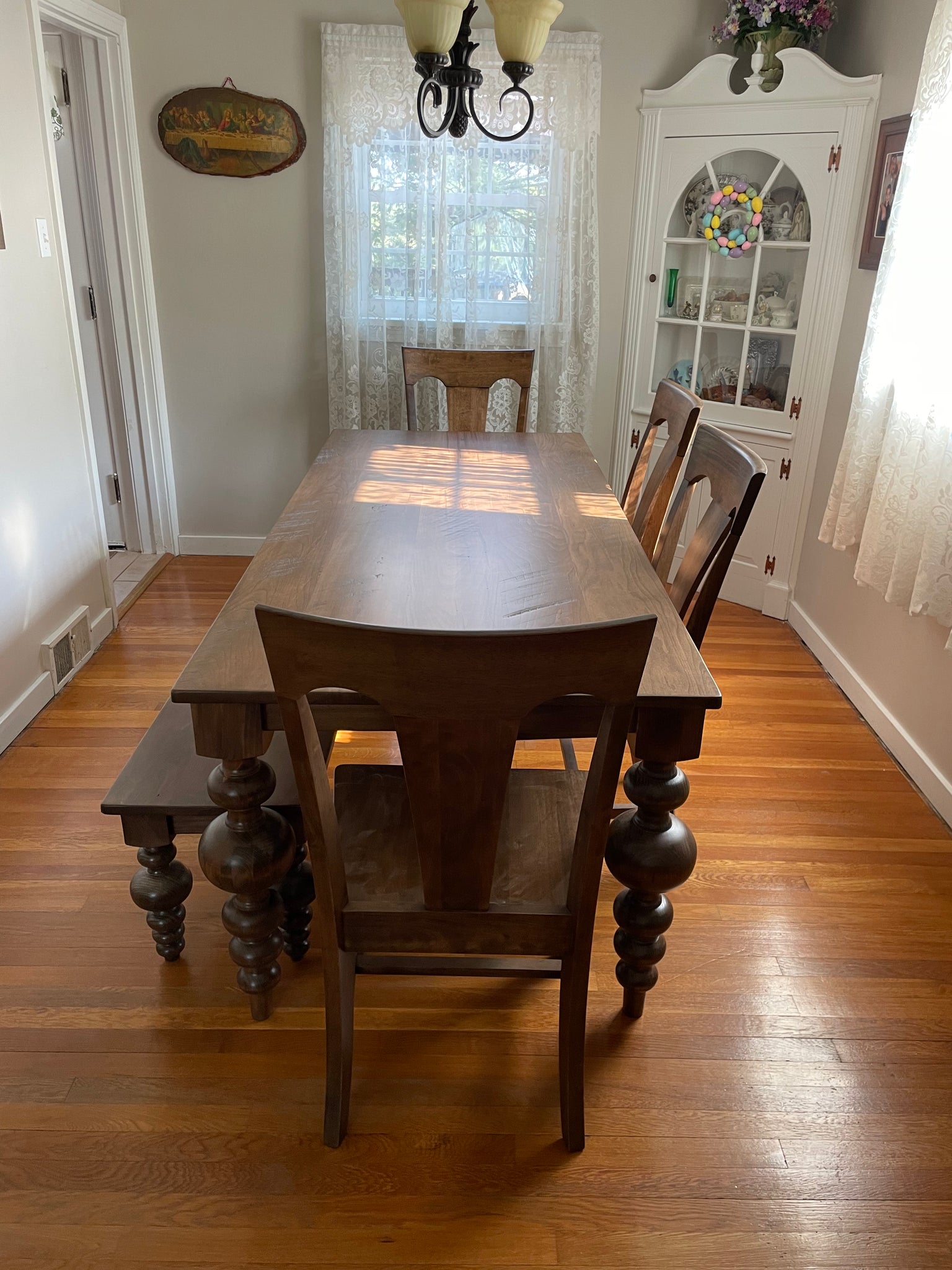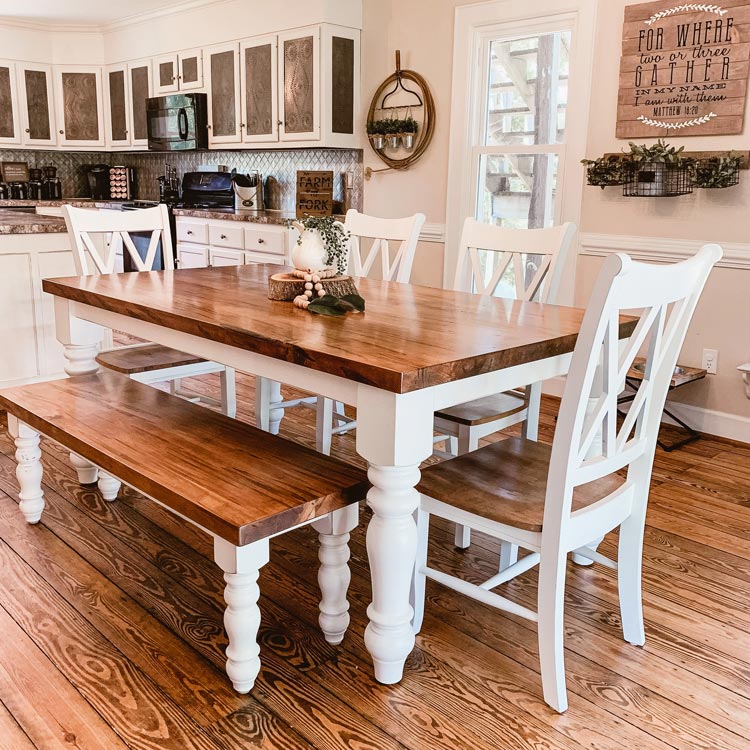Dining Room Table Legs: A Guide to Selecting the Right Style for Your Home
Dining Room Table Legs: A Guide to Selecting the Right Style for Your Home
Blog Article
From Conventional to Modern: Discover the Perfect Dining Space Table Legs for Your Design
The option of dining-room table legs plays a pivotal duty in defining the total character of your space, bridging the void between traditional workmanship and modern aesthetic appeals. While timeless styles such as cabriole and turned legs evoke a feeling of timeless sophistication, modern designs like hairpin and geometric alternatives offer an opportunity for striking visual interest. Reviewing the appropriate equilibrium in between these styles needs a nuanced understanding of your existing decoration and individual preference. As you think about these components, the question continues to be: how can you effortlessly integrate these diverse leg styles to develop a harmonious dining experience?
Comprehending Table Leg Styles
The selection of eating area table leg designs can dramatically influence both the aesthetics and functionality of the space. Each leg design adds unique visual aspects and useful functions, satisfying varied style preferences and use demands. Understanding these designs is vital for choosing the ideal table that aligns with your overall interior layout vision.
As an example, tapered legs offer a tidy, timeless look that can enhance a room's beauty, while pedestal bases give security and maximize legroom, making them ideal for smaller sized areas. Hairpin legs, a hallmark of mid-century modern-day design, present a commercial flair, enabling a ventilated, open feeling. In a similar way, trestle legs evoke rustic beauty, supplying robust assistance and a feeling of timelessness.
In addition, the option of materials plays a considerable duty. Wooden legs can bring heat and structure, whereas steel choices often share a streamlined, modern ambiance. Ultimately, recognizing table leg styles is essential for developing a cohesive dining location that shows individual design while ensuring practicality and convenience. By thoughtfully considering these elements, you can improve both the functional and visual allure of your dining room.
Conventional Table Leg Options
When choosing eating area table legs, conventional choices frequently personify timeless sophistication and workmanship. These designs reflect an abundant heritage and a commitment to quality, making them optimal for those that value classic visual appeals.
Among the most famous traditional leg styles is the cabriole leg, identified by its graceful bent shape. This design typically features decorative carvings and is most typically found in Queen Anne and Chippendale furnishings. Another popular option is the turned leg, which flaunts a collection of smooth, rounded shapes that offer a traditional appearance while maintaining stability.
In addition, the straight leg, while straightforward, supplies a basic and tough framework that can mix effortlessly with a range of tabletop styles. For those drawn to ornate outlining, claw-and-ball feet legs stimulate a sense of splendour and can act as a spectacular prime focus in any type of dining space.
Lastly, pedestal bases, although not strictly legs, give a different standard option that enables sufficient legroom and can be wonderfully carved. Each of these typical leg designs adds to the overall setting of a dining-room, marrying function with visual charm.

Modern Table Leg Layouts
Modern table leg styles supply a diverse variety of designs that highlight clean lines and cutting-edge materials. These styles often focus on functionality while functioning as striking prime focus within a dining space. Minimal looks prevail, with legs crafted from products such as metal, glass, and crafted wood, which add to a airy and contemporary feeling.
One popular style is the barrette leg, identified by its slim, conical structure that supplies security without frustrating the tabletop (dining room table legs). This style is often discovered in mid-century modern-day furniture and can easily complement different dining table forms. Another fad is using geometric forms, where legs might tackle unbalanced or angular forms, adding aesthetic passion and a touch of artistry

Mixing Styles for Unique Spaces
Often, house owners seek to these details create unique eating areas that mirror their personal style by blending numerous layout elements. This strategy permits for the consolidation of diverse visual appeals, resulting in an unified yet distinctive environment. Pairing a rustic wood table with smooth, modern-day steel legs can develop an attractive comparison that elevates the room's overall appeal.
Furthermore, integrating vintage table legs with contemporary tabletops can stimulate a feeling of background while maintaining a contemporary perceptiveness. Such combinations not only showcase specific taste yet also motivate imagination, allowing home owners to curate a room that feels both individual and inviting.
Color plays an important duty in this blending procedure; picking table legs that match or comparison with the existing color plan can boost aesthetic interest. For instance, whitewashed legs can soften the daring of a dark table surface, producing a balanced aesthetic.
Tips for Selecting the Right Legs
Choosing the right table legs is important for accomplishing both capability and aesthetic charm in your eating space. Begin by taking into consideration the overall style of your space. Typical settings benefit from legs that feature complex carvings or turned styles, while contemporary areas may require smooth, minimal styles.
Following, assess the elevation and security of the legs. dining room table legs. Typical table range between 28 to 30 inches in Click Here elevation, so make certain the legs enhance this dimension for comfort. Furthermore, robust products, such as wood or steel, can boost security and long life
Review the leg form also-- alternatives consist of straight, tapered, or pedestal layouts. Straight legs provide a timeless appearance, while tapered legs can add a touch of sophistication. Pedestal bases offer ample legroom and are perfect for smaller rooms.
Conclusion
In recap, choosing the optimal dining room table legs requires cautious factor to consider of both standard and contemporary styles. Standard alternatives such as cabriole and turned legs use timeless style, while contemporary designs like barrette and geometric shapes provide a modern touch. By integrating leg style, height, and material with the total design, a natural and welcoming environment can be attained. Inevitably, the chosen table legs should mirror the preferred visual, improving the eating experience within the space.
The variety of dining space table leg styles can considerably influence both the looks and performance of the space. Ultimately, recognizing table leg styles is essential for producing a cohesive dining area that shows personal design while ensuring functionality and convenience.One of the most legendary standard leg designs is the cabriole leg, characterized by its elegant curved shape. Straight legs offer a timeless appearance, while tapered legs can include a touch of style.In summary, choosing the excellent dining why not try here space table legs calls for careful consideration of both typical and contemporary designs.
Report this page